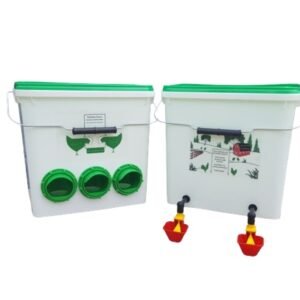Poultry lice are small, wingless insects that live on the skin and feathers of birds. They are species-specific parasites, meaning they generally don’t transfer between different bird species or to humans. These parasites feed on feathers, skin scales, and debris.
SYMPTOMS
CAUSES
PREVENTION
TREATMENT
Symptoms
- Common Signs Across All Poultry:
- Excessive preening and scratching
- Restlessness, especially at night
- Damaged/ragged feathers
- Reduced egg production
- Weight loss
- Pale combs and wattles
- Decreased vitality
- Specific Manifestations:
- Chickens:
- Clusters of lice eggs at feather bases
- Bare patches of skin
- Irritated vent area
- Turkeys:
- Feather damage on breast and back
- Reduced display behavior
- Damaged tail feathers
- Waterfowl:
- Generally less susceptible
Causes and mode of transmission
- Primary Causes:
- Direct bird-to-bird contact
- Shared nesting areas
- Introduction of infested birds
- Poor sanitation
- Overcrowding
- Transmission Methods:
- Direct contact between poultry
- Shared dust bathing areas
- Contaminated equipment
- Nesting materials
Prevention
- Environmental Management:
- Regular cleaning of housing
- Dust bath provision
- Proper ventilation
- Adequate space per bird
- Biosecurity:
- Quarantine new birds
- Regular inspection
- Proper poultry density
- Clean nesting materials
Treatment options
- Chemical Control:
- Approved insecticides
- Dust treatments
- Sprays as prescribed
- Following withdrawal periods
- Natural Methods:
- Diatomaceous earth
- Regular dust baths
- Environmental cleaning
Conclusion: Treatment should be comprehensive, treating all birds in the flock simultaneously and repeating as needed to break the parasite lifecycle. This condition requires ongoing management and prevention strategies for effective control.


